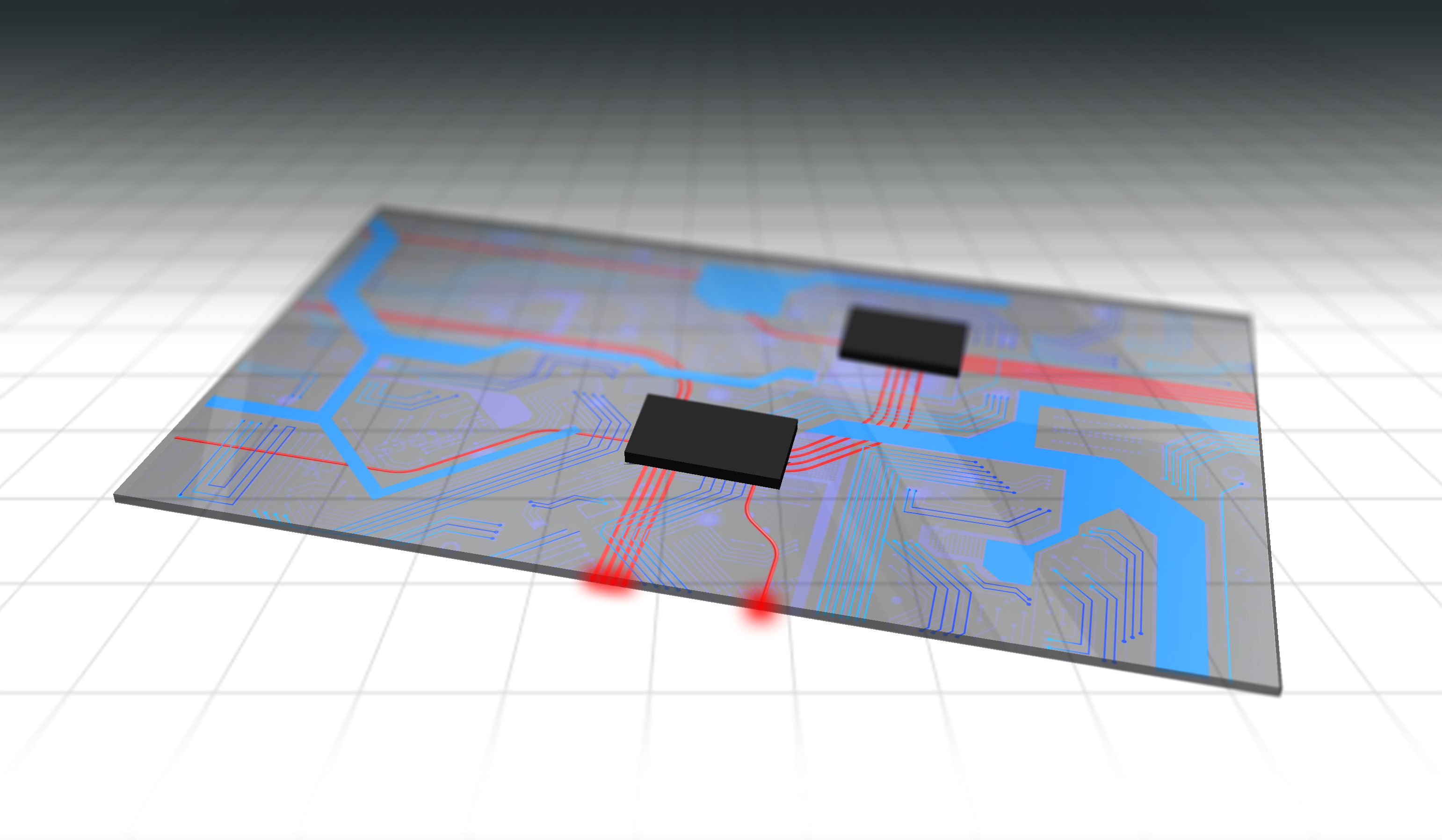Sensors and Sensor Systems
Thin glass – multifunctional substrate

With the increasing processing of ever higher data rates, the quality of signal transmission must also improve. While optical signal transmission currently dominates for long transmission distances, a large part of signal transmission at circuit board level is still electrical.
This is where electro-optical circuit boards (EOCBs) come in. A promising material for such circuit boards is thin glass. For this purpose, optical waveguides are generated in the glass and electrical layers are applied to both sides of the glass.
Fraunhofer IZM has developed a process that integrates low-attenuation (< 0.06 dB/cm) single-mode waveguides into large-format (440 mm × 330 mm) thin glass boards. The requirements of the display industry have also greatly improved the mechanical properties of the glass substrates, which benefits the production of glass EOCBs. In the future, flexible EOCBs will also be realized with these glass materials.
Researchers at Fraunhofer IZM are currently working on connector concepts. These should enable broadband coupling with low coupling losses between the printed circuit boards and fibers as well as between the printed circuit boards and the optical chips located on them. In addition, the scientists are opening up the research fields of sensor technology in connection with microfluidic structuring of glass and photonic quantum technology. The latter calls for more compact and cost-effective system integration technologies, for which novel approaches are being developed. The combination of low-cost PCB technology, optical functionalization of thin glass and expertise in microsystems technology opens up innovative and design-oriented approaches.
Last modified: